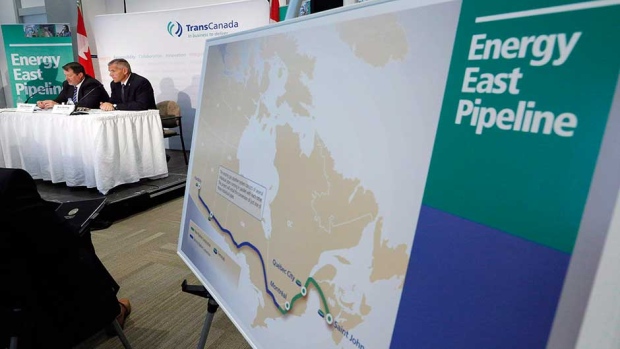Jan 25, 2017
Keystone XL revival may mean the death of Energy East

Scores of protests, nearly 39,000 pages of application documents and a totally revamped review panel may all have been for naught.
The odds of ever actually building Energy East, the $15-billion pipeline TransCanada proposed to send more than a million barrels of daily oil sands production from Alberta all the way to the Atlantic coast, are dramatically lower today than they were barely 24 hours ago. The odds of building Keystone XL, during the same timeframe, went from zero to near-certain.
While multiple hurdles must still be overcome before construction of the 1,851km Keystone XL project can begin, executive action taken in the United States on Tuesday may force TransCanada – the Calgary-based company behind both Energy East and Keystone XL – to choose between them. President Donald Trump invited the Canadian company to submit what would be its third application for the Alberta-to-Oklahoma export artery, and TransCanada is preparing to oblige.
“At best, we would expect TransCanada to build Keystone XL or Energy East,” Wood Mackenzie analyst Afolabi Ogunnaike said in a research note published late Tuesday, “but not both.”

Energy East was not officially proposed until mid-2013, more than a year after then-U.S. President Barack Obama rejected the first Keystone XL application in early 2012. He rejected the second application in late 2015, prompting TransCanada to file a legal claim against the U.S. government through NAFTA, demanding US$15-billion in compensation.
Only the most wildly ambitious forecasts of growing Canadian crude production, established back when oil prices were still north of US$100 per barrel, saw a need for all pipeline proposals then on the table to actually get built.
Now, with the approved expansion of Kinder Morgan’s Trans Mountain pipeline and the imminent return of Enbridge’s Line 3 to full capacity, experts argue the addition of Keystone XL should provide plenty of pipe to satisfy oil sands export demands for the foreseeable future.
“The ‘need’ for Energy East isn’t there right now,” Dan Tsubouchi, chief market strategist for Calgary-based Stream Asset Management, told BNN via email. “I don’t think there were any oil sands producers wanting to rely on Energy East overcoming local opposition.”
Even veteran Canadian pipeline executives are acknowledging an end to the “all pipelines in all directions” mindset. Patrick Daniel, CEO of Enbridge from 2001 through 2012, described the new mindset in an interview with BNN on Wednesday morning.
“I would like to see the current forecast for production in western Canada matched up to pipeline capacity, I’d like to see all that mapped out to know what is necessary,” Daniel said. “But an increase in production in the U.S., plus slower forecasts for growth in Canada, means we don’t need as much [pipeline] capacity as we once did.”
Opposition to the Energy East has been intense to say the least. Protestors disrupted regulatory hearings into the proposed pipeline last August. Shortly thereafter, two of the three original National Energy Board panelists were forced to resign over conflict of interest allegations. Ottawa appointed a new panel just last month.
Amid all the drama surrounding opposition to Energy East, the strongest opposition to the project could very well end up being the basic economic laws of supply and demand.
According to the latest National Energy Board forecast, oil sands production will grow by roughly one million barrels per day between now and 2020 before hitting an indefinite plateau. Analysts estimate oil sands producers need 500,000 bpd of new pipeline capacity just to take away what is being extracted right now. That means an extra 1.5 million bpd worth of new pipelines would suffice.
“Of course, projections of oil production are just that, projections [and oil prices] could sneak higher still,” notes Dirk Lever, managing director and head of equity research for Calgary-based AltaCorp Capital, in an email to BNN “[but] I am in agreement on those absolute numbers.”
And while Trump brought the Keystone XL pipeline back from the dead, there is a possibility Trump could put the final nail in coffin of Energy East, says Lever.
Trump has said approval of Keystone XL is subject to new terms that would give the U.S. “a better deal.” The United States is now attempting to sell some of its crude oil production to global markets after a nearly four-decade-old export ban was lifted in 2015, and since the Canadian crude shipped on Energy East would primarily be for sale to international markets, Trump may take the opportunity to prevent the added competition for American companies, says Lever.
“The last thing Trump wants is more Canadian oil going to markets outside the U.S. and competing with U.S. light oil exports that are sure to come,” he says.





